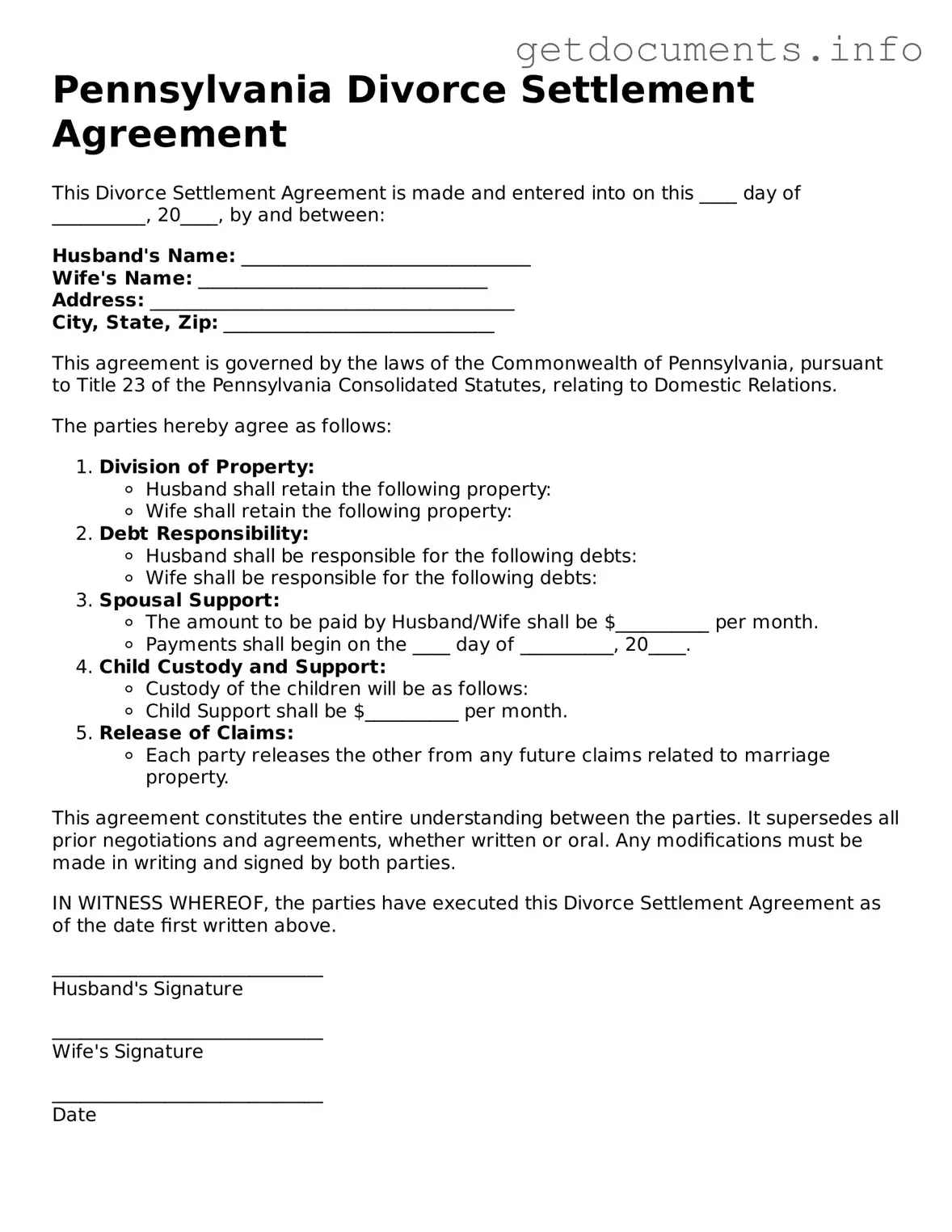Free Divorce Settlement Agreement Template for Pennsylvania
The Pennsylvania Divorce Settlement Agreement form is a legal document that outlines the terms agreed upon by both spouses during a divorce. This form addresses key issues such as property division, alimony, and child custody. Completing this form is an important step in finalizing the divorce process, so consider filling it out by clicking the button below.
Access Divorce Settlement Agreement Editor
